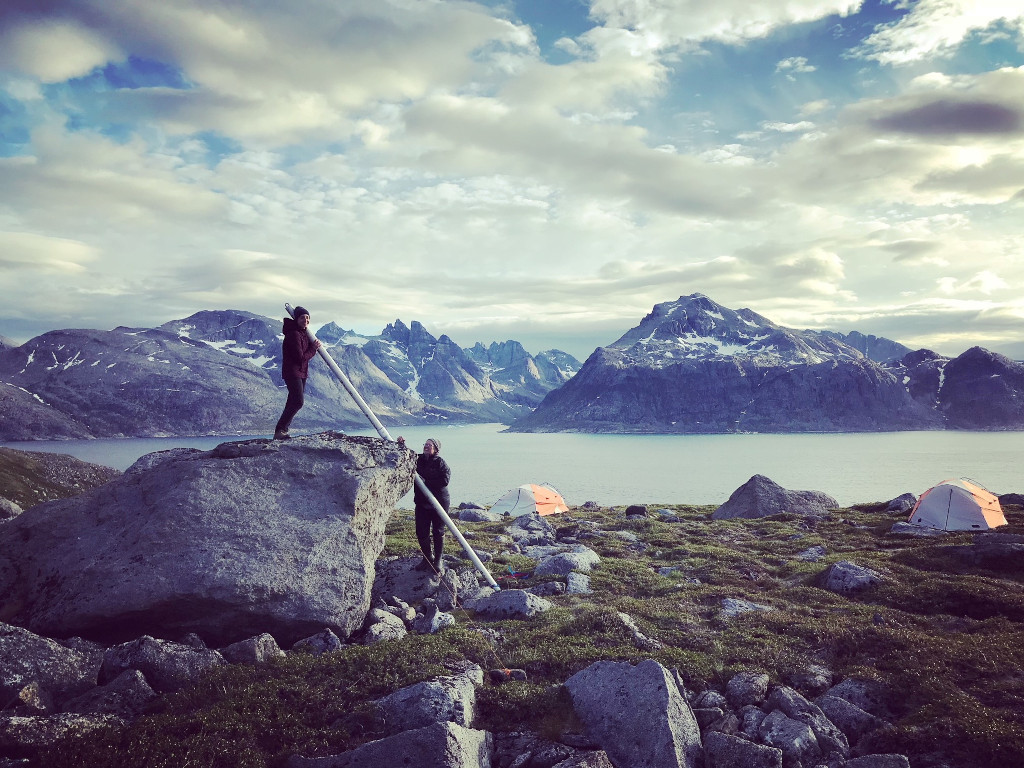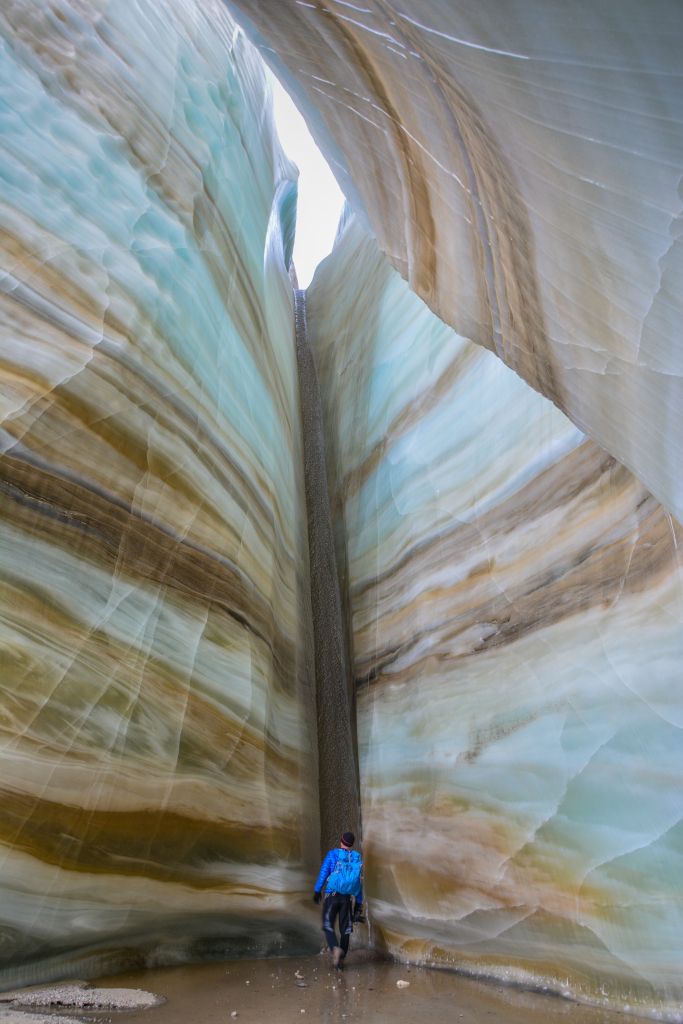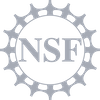General Information
Greenland (Kalaallit Nunaat in Greenlandic) is the world’s largest island with three-quarters of the island covered by a permanent ice sheet. It is the least-populous land mass outside of Antarctica, with isolated population centers due to the absence of a connective road system. These factors, combined with the harsh environmental and seasonal conditions, make navigating the remote country logistically demanding. Executing field research in Greenland provides challenges due to travel distances, lack of infrastructure, limited resources, environmental risks, foreign permitting, custom regulations, language barriers, currency difference, and the requirement to coordinate with agencies ranging from the Government of Greenland (GoG) to Department of Defense (DoD) sections such as the Air National Guard (ANG) and the United States Air Force.
The Battelle ARO team provides support to researchers via acute knowledge of the environmental conditions, the limited transport options, political nuances, and the local challenges, which translates into thorough planning efforts and realistic scheduling for NSF funded field teams.
Greenland Process Steps
Steps for executing your field season
STEP ONE:
PROPOSAL AND PRE-AWARD
During this process, pIease work with Battelle ARO to develop a proposed logistics plan and review the Suggested Reading by NSF. The PI should also investigate all costs, including permitting and outreach, that need to be included in their proposal submission. Additional information can be found on our Proposal Estimate Support page.STEP TWO:
NEW FUNDED AWARDS
Battelle ARO securely saves your project record in our system. Records outline your science objectives, along with logistics plans for your fieldwork. If your proposal is recommended for award, the PI reviews the record and the project summary is provided to NSF.STEP THREE:
PRE-FIELDWORK PLANNING
There are several steps in planning for a successful field season. Teams members should sign up for all applicable Field safety training, acquire all needed permits, review interaction plans and work with your assigned Project Manager to finalize all planning to safely and efficiently execute your fieldwork.STEP FOUR:
EXECUTE FIELDWORK
Following the plan developed at the pre-fieldwork planning stage, PIs conduct fieldwork according to the planned scope and budget. Communicate any changes or deviations to your Project Manager and they will determine next steps.STEP FIVE:
INCIDENT REPORTING AND LESSONS LEARN
Reporting incidents and near misses is integral to NSF's risk management program. Lessons learned are considered anonymously to make improvements in program safety. Report incidents to your Project Manager, via the Gateway, or by contacting NSF directly.Battelle ARO Greenland Hubs
RAVEN CAMP
Skiway training facility for the New York Air National Guard 109th Air Wing – Located at 66° 29′ North, 46° 17′ West.
KANGERLUSSUAQ
Formerly known as Sondestromfjord, this community is the base of Battelle ARO operations in Greenland. Located at 67° North, 50° 43′ West.
ILULISSAT
Ilulissat (formerly Jakobshaven) is a town in the Qaasuitsup municipality of western Greenland, about 350 km (220 miles) north of the Arctic Circle in Disko Bay.
SUMMIT STATION
At an elevation of 10,530 feet, Summit Station is located at 72° 36′ North, 38° 25′ West on the summit of the Greenland ice sheet.
PITUFFIK SPACE BASE (formerly Thule Air Base)
Pituffik Space Base (formerly Thule Air Base) is located 900 miles South of the North Pole at 76° 32′ North, 68° 50′ West. Proper clearances must be obtained for accessing Pituffik.
EGRIP
The East Greenland Ice core Project (EGRIP) site is an international field camp 200 km from the ice divide.
REMOTE GREENLAND
Remote research sites on the ice sheet, isolated villages, coastal tundra, and surrounding areas accessed by aircraft, foot, or traverse make up the majority of the funded research groups in Greenland.
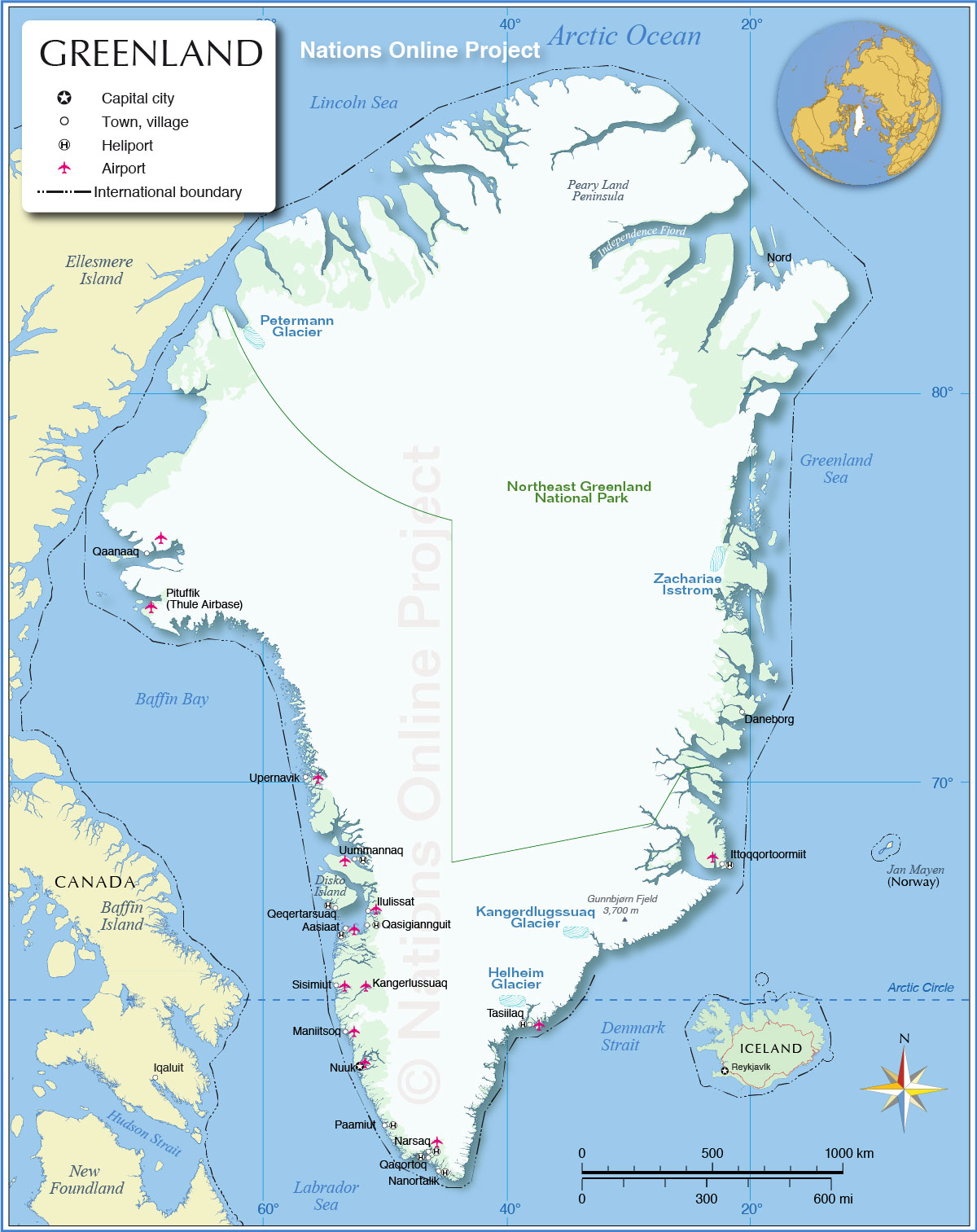
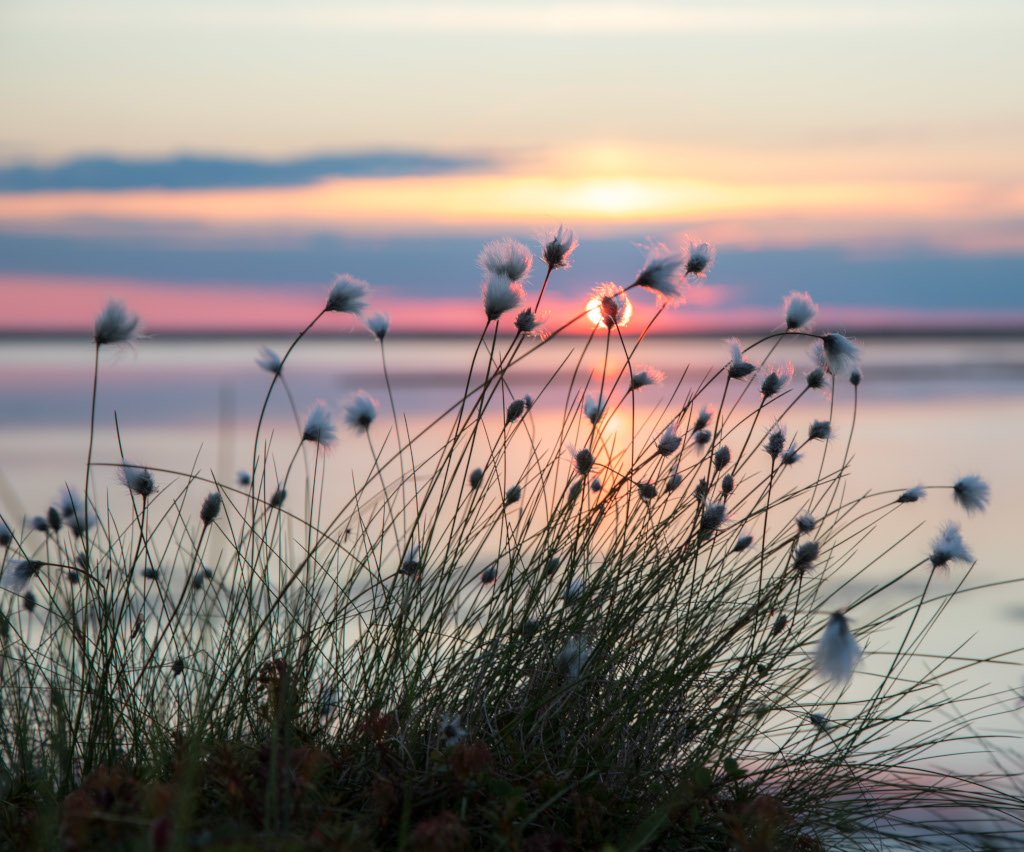
PROPOSAL ESTIMATE SUPPORT
Photo by: Kevin Pettway
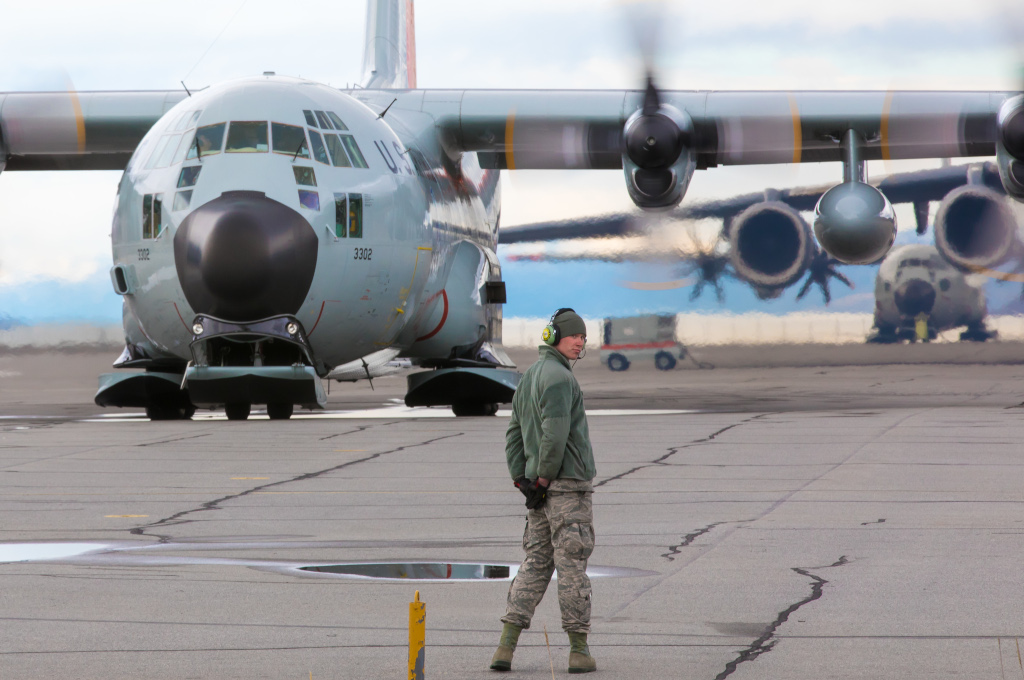
GETTING TO GREENLAND
Photo by: Kevin Pettway
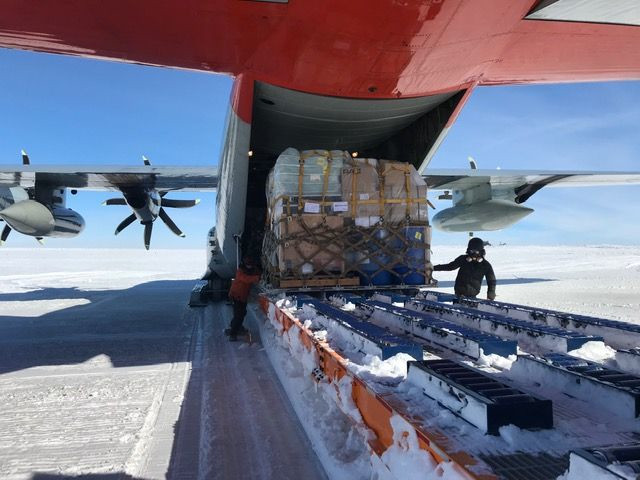
GETTING CARGO TO GREENLAND
Photo by: Austin Danicic
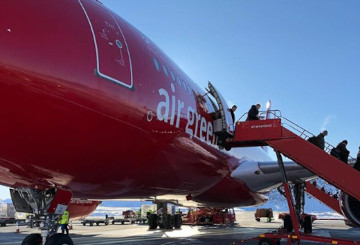
TRAVEL WITHIN GREENLAND
Photo by: Kelly Cheek
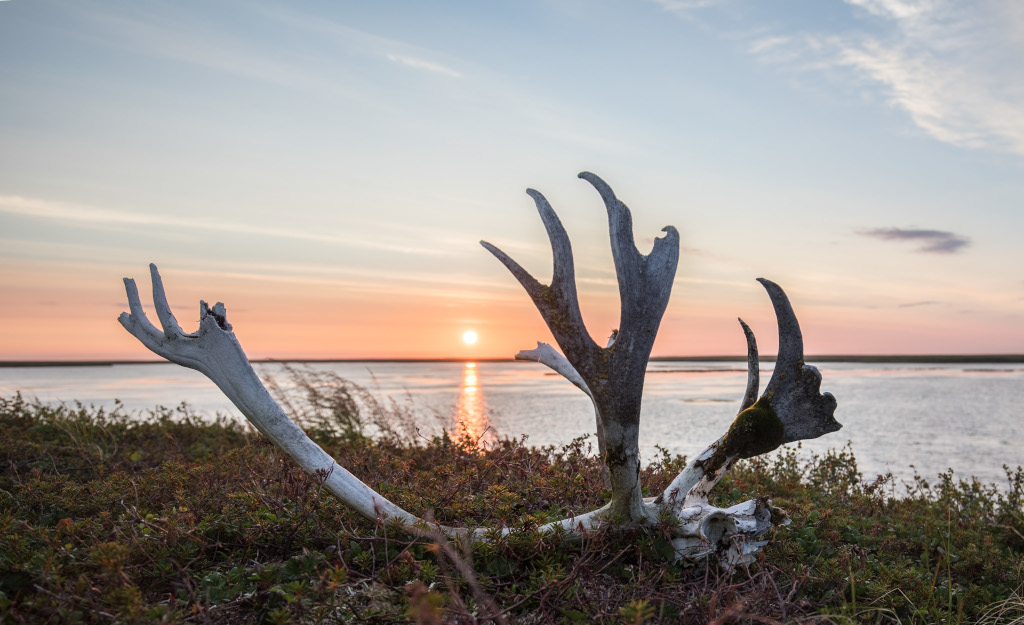
HEALTH, SAFETY, & ENVIRONMENT
Photo by: Kevin Pettway
Developing Your Greenland Field Plan
Greenland Field Gear Allocations
Battelle ARO can provide most equipment required to conduct field research. To reduce costs, researchers are encouraged to request use of NSF owned field equipment in the proposal and funded phases of their project. Equipment is constantly inspected for quality assurance. Battelle ARO staff can provide training on how to set-up and use any piece of equipment that is available. Once funded, your project will gain access to the complete list of gear available; however, the inventory of available equipment may include:
- Tents
- Snowmobiles
- Sleds
- Generators
- Cooking equipment
- Ice augers
- Tools
- Camp furniture
- Consumables
- Non-lethal wildlife deterrents
- Fuel containers
- Safety gear
The majority of field party equipment is stored in NSF-leased warehouses in Kangerlussuaq, but can be shipped to any area on the island if a project does not pass through Kangerlussuaq. Contact your Battelle ARO PM or the Greenland Operations Manager for more information.
Photo by: Jason Briner
Clothing
Science party members are generally responsible for their own cold weather and field clothing.
Before departing, the team tries on cold weather gear to ensure proper fit and full inventory.
Fabrics to consider are Polar Plus Fleece, Polypropylene, Capilene, wool, and silk. Avoid cotton fabrics and jeans for remote field site use. Keep in mind that rain is a normal weather condition in Alaska. Be aware that during the summer season (May through September) the temperature can fluctuate between 10 and 90 degrees Fahrenheit depending upon the location.
Additionally, researchers should consider mosquito season (late May - early September), and bringing protective "bug shirts" and insect repellent.
For a general list of cold weather gear, review the recommendations below.
Recommended Cold Weather Gear:
- 1 each parka with hood
- 1 or 2 pair insulated/waterproof bibs (Carhartt)
- 1 pair wind pants, bib non-insulated
- 1 each pile/fleece jacket
- 1 each pile/fleece pants
- 1 each waterproof rain coat
- 1 each wind jacket with hood
- 2 pair expedition weight thermal top/bottoms
- 1 each sleeping bag
- 1 each sleeping bag liner
- 1 pair Sorel boots with spare liners (Glacier Model)
- 1 pair insulated rubber boots (Break up boots or Gum boots)
- 1 pair hiking boots
- 4-6 pair wool socks
- 1 each hat, musher style with earflaps
- 1 each hat, pile or wool cap
- 1 each neck gaiter
- 1-2 pair leather work gloves
- 1-2 pair insulated ski gloves
- 1-2 pair rubber gloves with cloth backside
- 1 pair expedition mitts
Recommended Personal Gear:
- 1 each towel
- 1 each day pack
- 1 pair sunglasses
- 1 each water bottle
- Chapstick
- Sunscreen
- Medications with copies of any prescriptions
- Batteries
- Insect headnet
- Insect repellent (DEET)
- Reading material
- Toiletries
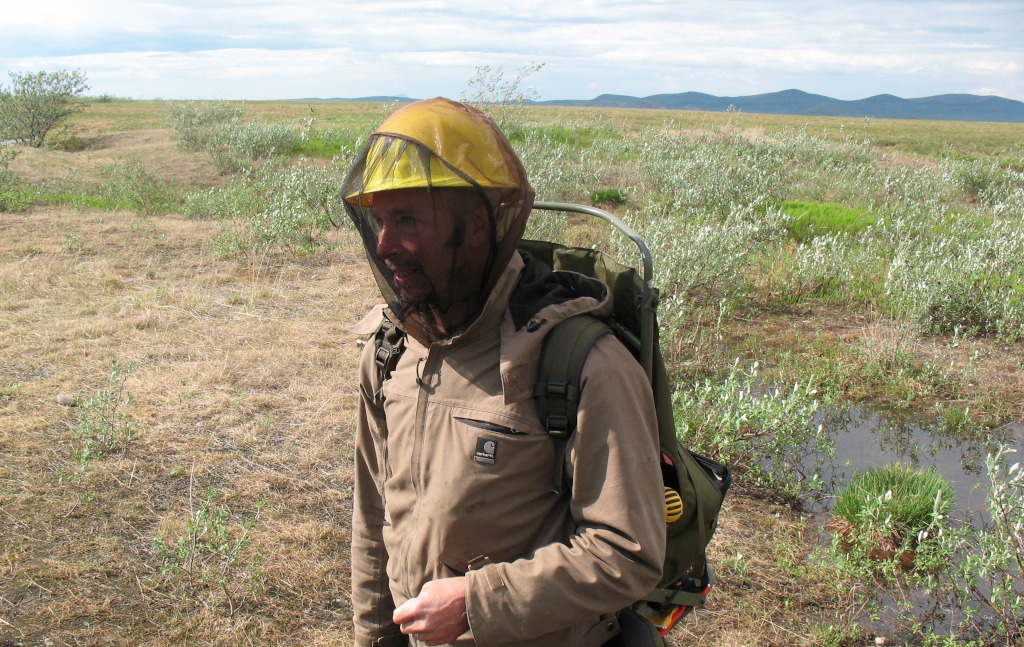
Photo by: Tracy Dahl
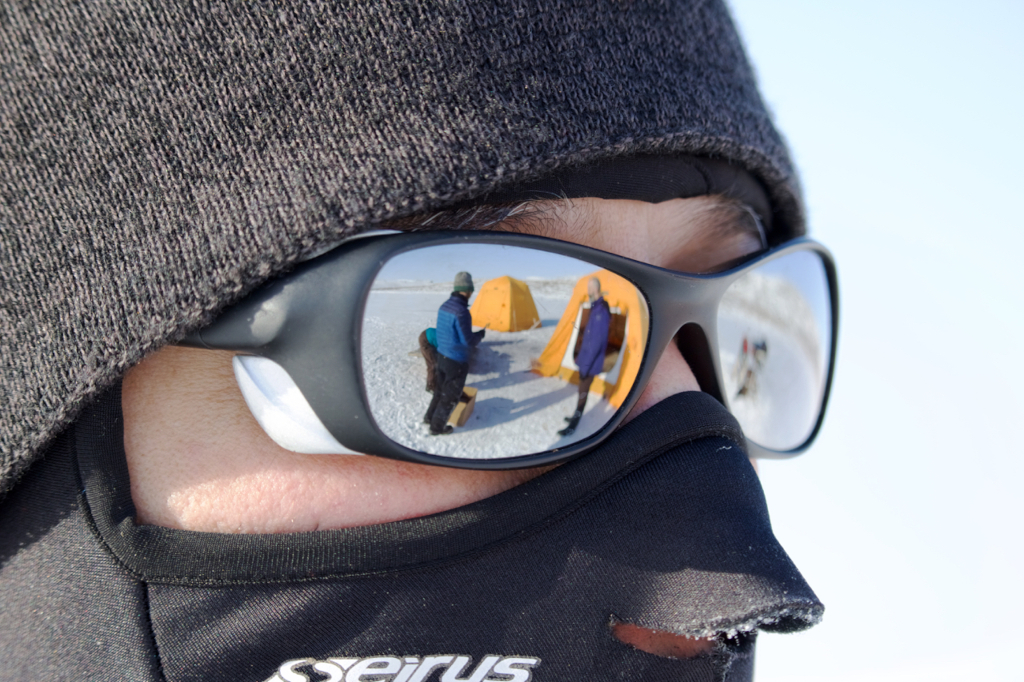
Photo by: Kevin Pettway
Greenland Construction & Engineering Support
Battelle ARO construction staff have a seasonal presence at most of the Arctic hubs (Kangerlussuaq, Summit Station) to attend to operational maintenance and facility upgrade projects. Researchers can benefit from Battelle ARO expertise whether they need a special building designed for an instrument or simply need custom boxes made for retrograde of rock samples. Battelle ARO staff are experienced in everything from designing and building more robust camps to the typical tent set up.
Battelle ARO support services may include:
- Remote science camp facilities complete with power and water
- Mechanical, structural, electrical, and civil engineering
- Custom fabrications and installation for scientific or logistical needs
Please reach out to your Battelle ARO PM or the Construction manager for more information.
Remote Power Systems
The Battelle ARO team has extensive experience with design, installation, operation and maintenance in all power technology areas: engine (reciprocating diesel & microturbine), fuel cell, hydroelectric, photovoltaic, storage/rechargeable batteries, and wind turbine generators (WTG).
Battelle ARO team is experienced in:
- Erecting towers and photovoltaics on unstable soils or snow, using hardware and anchors designed especially for permafrost or snow structures
- Integrated, redundant power-generation systems to strategically overlay complementary power sources (example – photovoltaics and wind turbines as a primary input, with fossil fuel generators as secondary)
- Internal instrument heating systems
- Integrated remote monitoring, command, and control systems
Battelle ARO can design power systems to meet the specific needs of researchers and projects whether it is a quickly deployed renewable energy based portable power systems or a long-term power systems designed to minimize impacts to the research project through the use of clean renewable energy and strategic placement so as not to influence normal snow accumulation patterns. Please reach out to your Battelle ARO PM or the Construction Manager for more information.
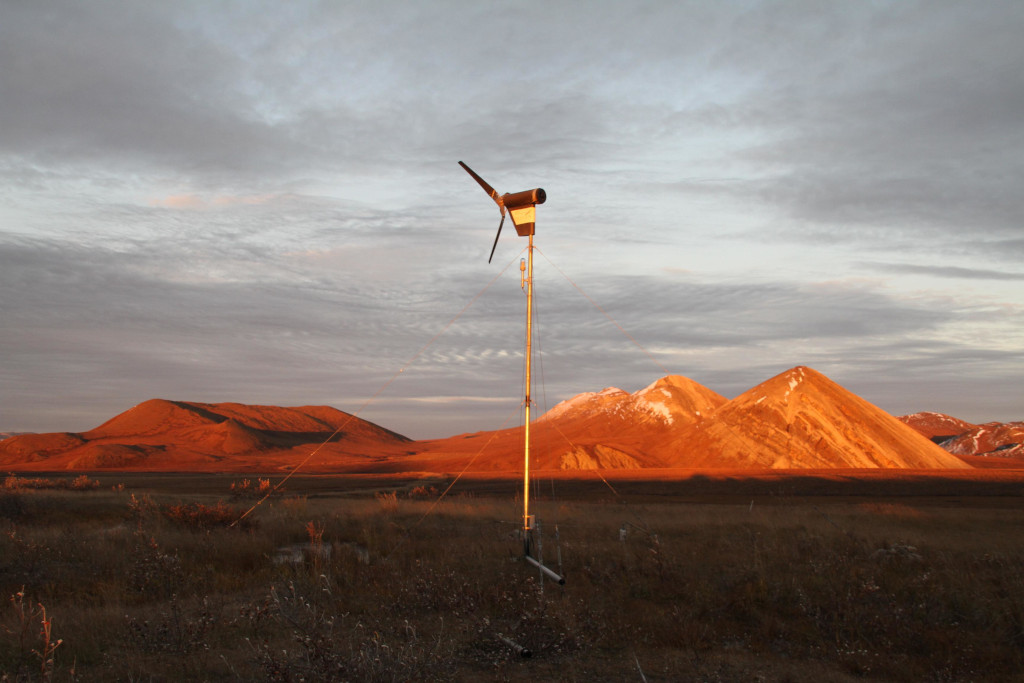
Photo by: Roy Stehle
Greenland Communications
Research work in remote locations relies on good communications and reliable technology for safe operation, field coordination, and data transmittal. Participants often need to communicate activities, weather data, and safety status; transfer raw data; and remotely monitor and operate equipment.
Modern researchers are increasing the complexity of field-based science and looking to communication technologies to enable mobile computing, real-time or near-real-time data transmission, and remote monitoring.
The Battelle ARO team facilitates Arctic field communications by offering:
- General internet connectivity and/or data transmission options from Battelle ARO Hub-Locations:
- Kangerlussuaq (provided by Battelle ARO)
- Summit Station (provided by Battelle ARO)
- Thule Air Force Base (provided by Battelle ARO)
- Field Camp or remote communication equipment allocations:
- Portable or Mobile Radios, such as:
- VHF, HF, Air-to-Ground, and Marine band
- Personal Locating Beacons (PLB)
- GPS
- Iridium phones
- Portable Satellite Communication Terminals
- Portable or Mobile Radios, such as:
For further information on communications gear available contact your Battelle ARO PM or PFS ITC manager.
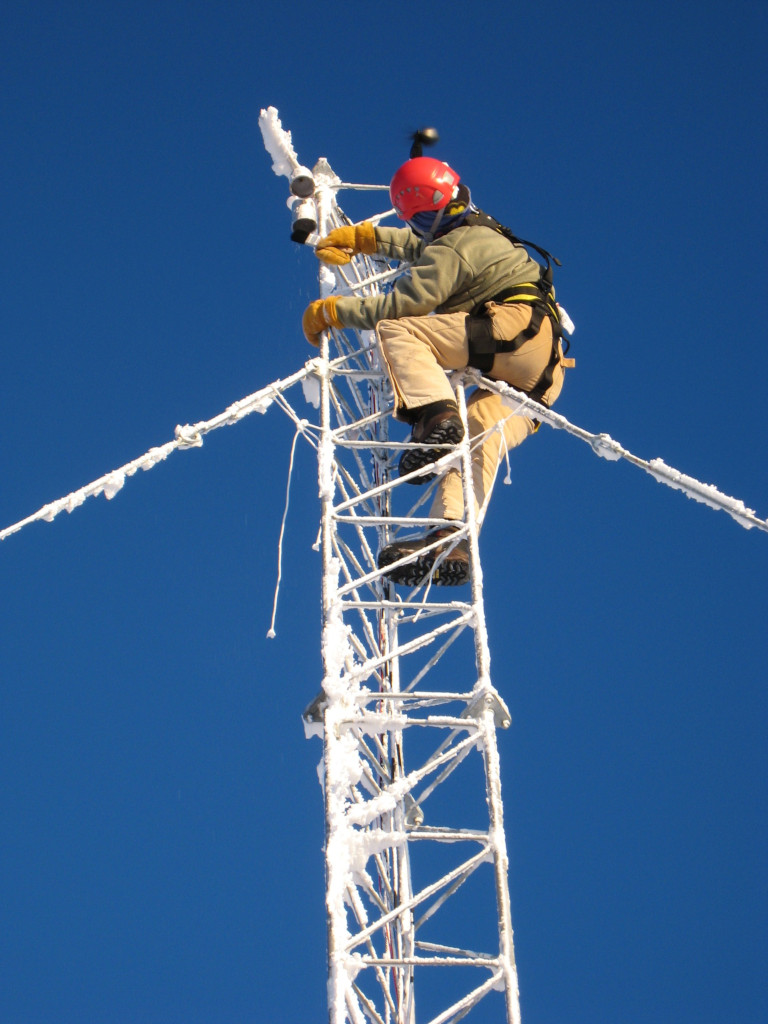
Photo by: Katrine Gorham
Greenland Air and Vessel Chartering
Air Operations
The Battelle ARO team will begin aviation support analysis in the proposal planning process using a requirements-based approach to identify logistics feasibility, type of aircraft needed, and preliminary risk analysis. Once funded, Battelle ARO PMs and regional operations staff will provide expertise in all the nuances required to make even the most complicated of aviation plans achievable.
Battelle ARO staff have experience in the following:
- Air frame determination, including expertise in fuel burn rates, payload/distance/elevation limitations, landing terrain limitations, sling-load capabilities, etc.
- Aircraft ground time and crew day maximums
- Fuel cache planning
- Safety requirements
- Pilot communications – relaying coordinates and weather observations
- Aircraft load planning
- Hazardous material declarations
- Pre-flight safety orientations
- Daily route planning/prioritizations/flight-following
- Facilitating after-hours airport openings as required
Vessel Operations
Similar to contracting aircraft, Battelle’s procurement and science planning teams maintain a directory of potential research vessels that incorporate science capabilities, port requirements, contact information and vessel specifications. This directory will be referenced to expedite analysis of available vessels meeting the science and timeframes requirements, while simultaneously expediting the procurement selection process. Battelle ARO science PMs have experience facilitating engagement between research projects and coastal communities to deconflict subsistence, wildlife, or community concerns. Existing relationships and communications assure NSF-funded cruises are abiding by cultural, permitting, and wildlife mandates. The Battelle ARO team can provision marine mammal and community observers and facilitate outreach requirements and post-cruise reporting to ensure compliance at the researcher level. In addition to providing expertise about research vessels, Battelle ARO PMs are experts in sending cargo by vessel, which is a cost effective way to reach many locations in the Arctic.
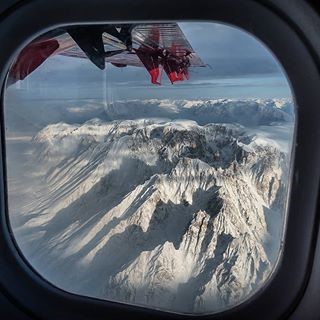
Photo by: Jessy Jenkins
Fuel Handling
Safe Fuel Handling Procedures for Field Personnel
All researchers using fuel at a field site must use containment for all fuel and equipment that uses fuel. Researchers should be aware of how to clean up a spill, and how to use a spill response kit.
Containment Systems
Battelle ARO can provide researchers with spill containment equipment and spill response kits for Battelle ARO issued equipment. Researchers should be prepared to provide their own resources for any non NSF equipment they are taking into the field that uses fuel.
Cleaning Up a Spill
Any amount of hazardous material spilled on the ground at a field location must be cleaned up. All researchers going to a field site should realize the liability they are assuming for safe fuel handling practice. The researcher and his/her institution will be responsible for any spills and remediation of spills at a field site.
How to Remediate a Small Spill
- Contain the spilled material.
- If feasible and safe, absorb the spilled material using absorbents from local spill kits or, if the spill is on snow, shovel the snow up and place in plastic bags or a drum to be disposed of off-site. On soil, shovel the contaminated material into a bag or drum for disposal.
For Large Spills
If a large spill occurs, the researcher should notify Battelle ARO staff and the local authority responsible for the land on which the spill occurs (i.e., BLM, NPS) immediately for assistance.
Greenland Travel Support
Battelle ARO provides research teams in the Arctic with various means of travel support. Work with your Battelle ARO PM to outline your requirements so that the correct transportation mode can be built into your support plan. Examples of travel support consist of:
- Lodging arrangements ranging from commercial hotels, user days at Arctic science stations, or houses in remote villages where hotels are not present
- Airport transfers at Battelle ARO hubs
- Visa support
- Commercial air ticketing as pertinent to your grant
- Vehicle rentals
Greenland Cargo and Sample Coordination
The Battelle ARO team recognizes the importance of getting the gear required to complete your science to/from the field safely. Additionally, we understand the absolute requirement to maintain sample integrity during transport to home institutions or sample repositories such as the National Ice Core Laboratory. We aim to fully understand and document your requirements while forming our logistics plan to get your items safety to/from the Arctic.
Battelle ARO support may include:
- Cargo handing and tracking
- Air, ground, and vessel cargo solutions
- Sample storage
- Science technician sample assistance (Summit Station)
- Sample import guidance/assistance
- For ice core samples:
- Providing packaging materials such as ice core boxes/tubes/eutectics, and data loggers to track temperature stability
- Construction of snow trenches for in-field storage
- Rental and temperature checks of a commercial freezer in hub-town
- Proper insulated packaging of southbound Air National Guard pallets
- Clear communication and facilitation of Air National Guard cold-deck protocols
- Arrangements for freezer trucks and/or overnight shipping to return samples to various institutions.
Contact us for additional questions.
